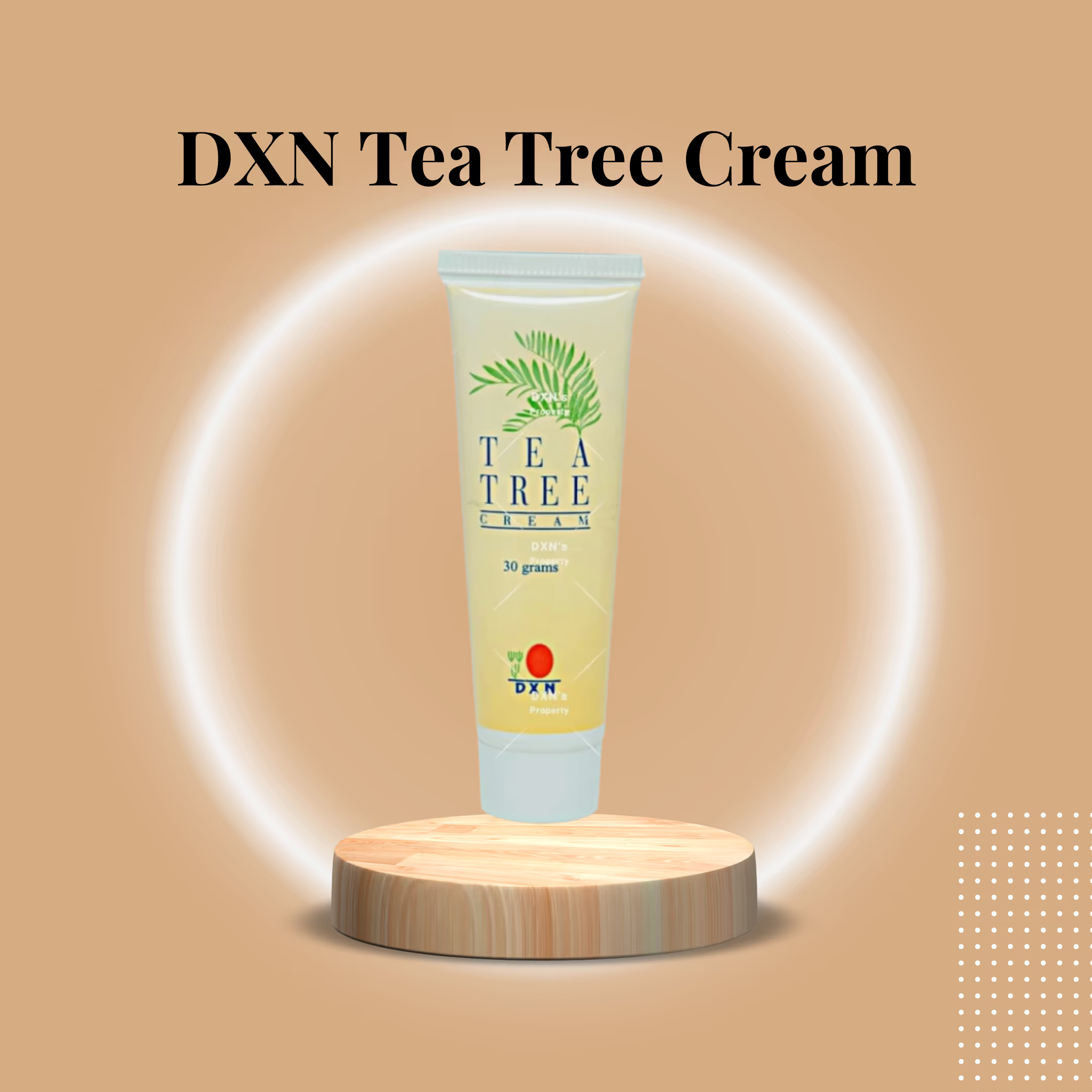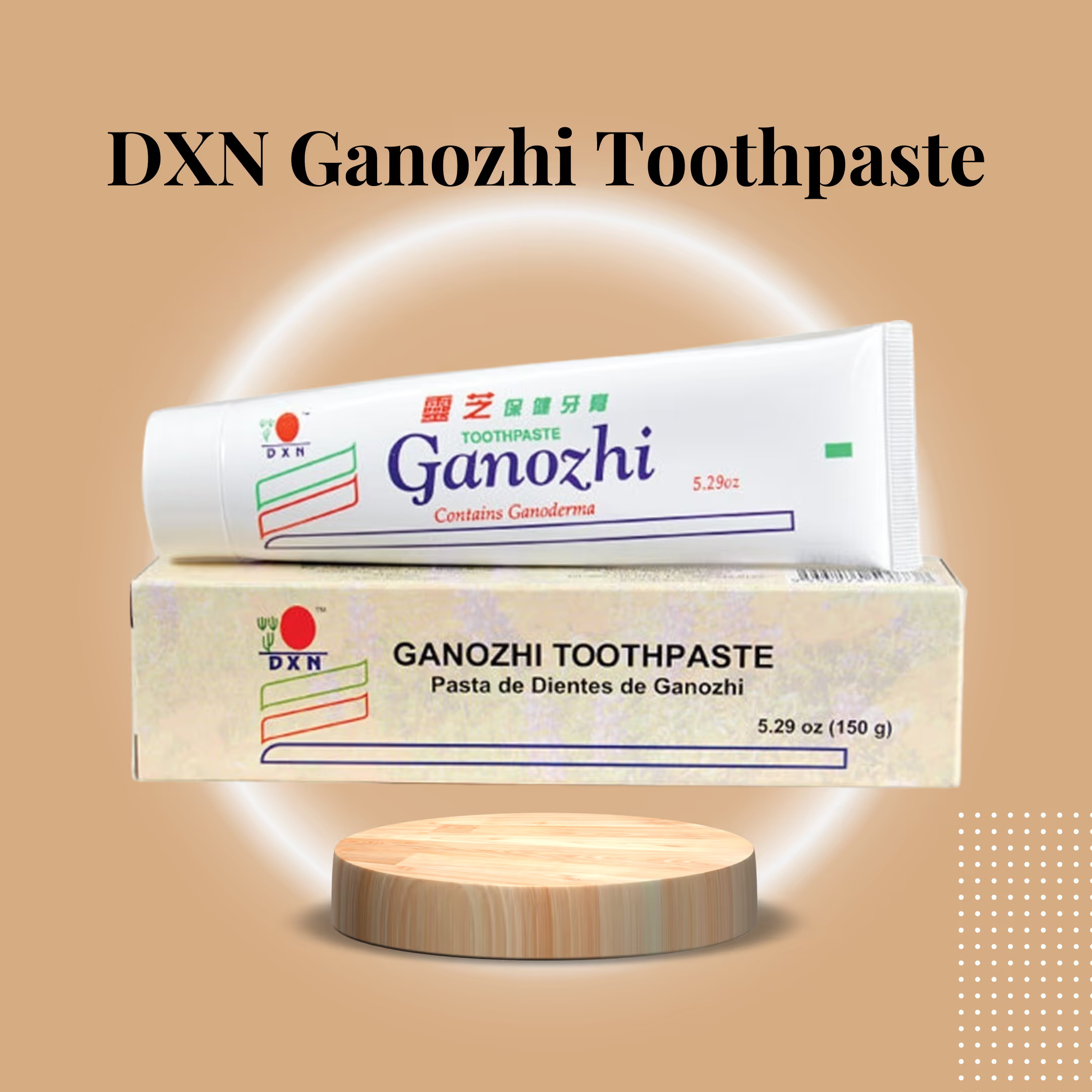What is DXN Oozhi Tea?
At its core, DXN Oozhi Tea is a functional beverage created by combining two simple yet powerful elements:
- A premium Oolong tea base (Camellia sinensis) — chosen for its nuanced flavor profile and balanced polyphenol spectrum; and
- A standardized Ganoderma lucidum extract — selected for reliable concentrations of triterpenoids and polysaccharides that carry many of Reishi’s traditional benefits.
Unlike flavored, sugar-heavy ready-to-drink products, Oozhi Tea is positioned as a pure, additive-free infusion: no preservatives, no artificial colorings, no unnecessary fillers. The product is built to be mixed and enjoyed as a daily ritual — a cup you’ll look forward to rather than force down.
Why this combination matters: Oolong + Ganoderma
Putting Oolong and Ganoderma together is not an accident. Each contributes distinct physiological advantages that complement the other.
Oolong tea: the balanced polyphenol profile
Oolong tea sits between green and black tea, thanks to its partial oxidation. This process changes some catechins into larger polyphenolic compounds (theaflavins, thearubigins) and retains green tea molecules. As a result, a complex, aromatic flavor many prefer over sharper green tea;
- a polyphenol mixture that supports antioxidant defenses and metabolic processes; and
- a moderate caffeine content — enough to enliven the mind, but not so much as to trigger jittery peaks.
Ganoderma lucidum (Reishi): adaptogenic and immunomodulatory support
Reishi has long been valued in traditional medicine as a restorative mushroom. Modern studies highlight two main groups of active molecules:
- Polysaccharides (e.g., beta-glucans) that interact with immune cells and modulate immune signaling; and
- Triterpenoids which are associated with antioxidant, anti-inflammatory, and liver-protective effects.
When these Ganoderma actives are paired with Oolong’s polyphenols, the result is a beverage that helps both defend and tune internal systems: antioxidant protection, liver support for natural detox pathways, and immune system modulation that favors balance rather than over-activation.
How Oozhi Tea works — a look under the hood
Let’s break down core mechanisms in plain language.
1. Cellular antioxidant defenses (Nrf2 pathway)
One of the body’s best defenses against environmental and metabolic stress is the Keap1–Nrf2 signaling system. Activating Nrf2 upregulates a suite of Phase II detoxifying enzymes (glutathione S-transferases, NAD(P)H quinone oxidoreductase, etc.), enhancing cells’ ability to neutralize reactive oxygen species and process xenobiotics. The polyphenols in Oolong and triterpenoids in Ganoderma have been shown to influence this pathway — meaning regular intake may support the body’s intrinsic cleaning and repair machinery.
2. Liver health and detoxification support
The liver is responsible for most detoxification in the body. By supplying antioxidants and potentially influencing metabolic enzymes, Oozhi Tea's components help the liver manage oxidative stress and efficient metabolism. This is not a quick fix, but consistent support for this essential organ.
3. Immune balance, not overdrive
Polysaccharides in Ganoderma interact with immune cells, including macrophages, dendritic cells, and natural killer cells, helping to tune cytokine signaling. In practice, this tends to support a well-regulated immune response, which is more desirable than blunt stimulation that could fuel chronic inflammation.
4. Steady, tasteful energy and cognitive clarity
Oolong delivers moderate, sustained caffeine. Oolong polyphenols and tea's calming effects enhance cognitive function. Together with adaptogens for fatigue, the result is a cup that gives alertness without crashes.
The main benefits — what users report and the likely effects
When Oozhi Tea becomes part of your daily routine, you are likely to notice improvements, including better liver detoxification and function, more stable energy with enhanced mental sharpness, increased immune resilience, improved metabolism that can aid in weight management, reduced stress levels, and a pleasant daily drinking experience.
Detox and liver support
- Oozhi Tea supports liver health and aids in detoxification through its triterpenoids and polyphenols. Daily Oolong intake may improve liver enzyme levels, reflecting more effective detoxification and liver function. This blend helps the liver process daily metabolic and environmental stress, and can enhance the results of standard detoxification efforts, such as hydration and fiber intake.
- Helps the liver better manage daily metabolic and environmental loads; makes standard detox practices (hydration, fiber intake) more effective.
Steadier energy and mental clarity
- Oozhi Tea provides stable, long-lasting energy and clearer mental focus without causing anxiety or energy crashes. Ganoderma supports stamina, making it easier to maintain concentration throughout the day.
- This combination is well-suited to mornings and early afternoons when a calm, focused state is desired.
Immune resilience
- Standardized Ganoderma extract in Oozhi Tea provides polysaccharides that help fortify the immune system, making your body more resilient to everyday stressors.
Metabolic support and weight management
- Oolong polyphenols in Oozhi Tea help regulate fat metabolism, encourage natural thermogenesis, and support healthy weight control.
- When combined with healthy lifestyle choices, Oozhi Tea can be part of a weight-management approach.
Stress buffering and mood support
- The adaptogenic Ganoderma in Oozhi Tea helps buffer the effects of stress, stabilize your mood, and support a steady sense of calm in your daily routine.
Palatable ritual — a delightful drinking experience
- The smooth, aromatic Oolong in Oozhi Tea makes it a pleasant daily drink. Enjoyment increases the likelihood of maintaining the routine, helping support long-term wellness.
How to brew and use DXN Oozhi Tea for best results
Oozhi Tea is easy and versatile to prepare. As you brew, the aroma of Oolong blends with the earthiness of Ganoderma, inviting you to pause and savor the moment. Each sip balances flavor and benefits. Here are practical recommendations to optimize each cup.
Basic hot brew (recommended)
- Place about 1 g (half a scoop) of Oozhi Tea powder in a cup.
- Pour ~200 ml of hot water (around 85–95°C). Avoid boiling water to achieve a milder flavor.
- Steep 3–5 minutes. This longer time helps extract Ganoderma actives and Oolong polyphenols.
- Strain or stir and enjoy.
Iced or chilled version
- Dissolve a serving in a small amount of hot water to ensure full dissolution.
- Add cold water and ice. Optional: a wedge of lemon or a splash of sparkling water for refreshment.
Concentrated broth (for targeted support)
- Use 2 scoops and simmer briefly in 300–400 ml water for a stronger infusion and deeper relaxation in the evening.
Timing tips
- Morning or early afternoon is ideal for cognitive lift and metabolic support.
- Late afternoon/evening works well for people who want the adaptogenic calming effects; monitor caffeine sensitivity to avoid sleep disruption.
How to integrate Oozhi Tea into daily life
As a morning ritual
Replace one cup of coffee or a sugary beverage with Oozhi Tea. Pair it with a protein-rich breakfast to help stabilize blood sugar levels.
As an afternoon reset
Start your own '2 p.m. Clarity Ritual'—make Oozhi Tea your trusted pick-me-up 90–120 minutes after lunch to beat the midday slump. Treat this as your daily wellness habit to enjoy energy and focus; the more consistent you are, the greater the benefits. Make it part of your routine today.
As a wellness pairing
- For comprehensive wellness, pair Oozhi with DXN Cordypine or Cocozhi to experience complementary benefits (energy, detox, cognitive support). Take the initiative to integrate Oozhi into your product ecosystem and maximize positive results.
- Use Oozhi after exercise to support recovery, paired with hydration and protein.
Safety, contraindications, and sensible use
Oozhi Tea is generally safe for most healthy adults, but consider the following:
- Caffeine: Contains moderate caffeine from Oolong. If you’re caffeine-sensitive, start with a half serving or avoid consuming it late in the day.
- Medication interactions: If you take anticoagulants, immunomodulatory drugs, or other specific medications, consult your healthcare provider before using concentrated herbal extracts daily. Ganoderma may interact with some medications.
- Pregnancy & breastfeeding: Exercise caution and consult a healthcare provider before using concentrated herbals regularly.
- Allergies: Avoid if you have specific allergies to mushrooms or components of tea.
Quality matters: extraction, standardization, and purity
Not all Ganoderma or tea products are equal. Several factors determine whether a functional tea will deliver the expected effects. DXN stands apart with its commitment to sustainable and transparent sourcing practices, ensuring that every cup not only supports wellness but also respects the environment.:
- Standardized extracts ensure each serving contains consistent concentrations of polysaccharides and triterpenoids.
- Extraction method matters: dynamic, efficient extraction techniques yield higher, more bioavailable concentrations than simple dry-powder mixes.
- Sourcing and testing are essential — responsible producers test for contaminants (such as heavy metals, pesticides, and microbial loads) and adhere to good manufacturing practices (GMP).
DXN emphasizes controlled cultivation and rigorous processing so each serving of Oozhi Tea delivers predictable potency. For consumers, look for products with transparent sourcing and lab testing whenever possible.
Practical recipes and ways to enjoy Oozhi Tea
Here are a few simple, tasteful ideas beyond the basic brew:
- Lemon & honey Oozhi: Add a slice of lemon and a teaspoon of honey for a soothing, antioxidant boost.
- Oozhi Latte: Warm 1 scoop with steamed milk (or plant milk) and a dash of cinnamon for a comforting, lower-caffeine latte.
- Post-meal infusion: A warm cup of tea after dinner may help with digestion and relaxation — combine it with a glass of water to support hepatic clearance.
.avif)
.avif)




